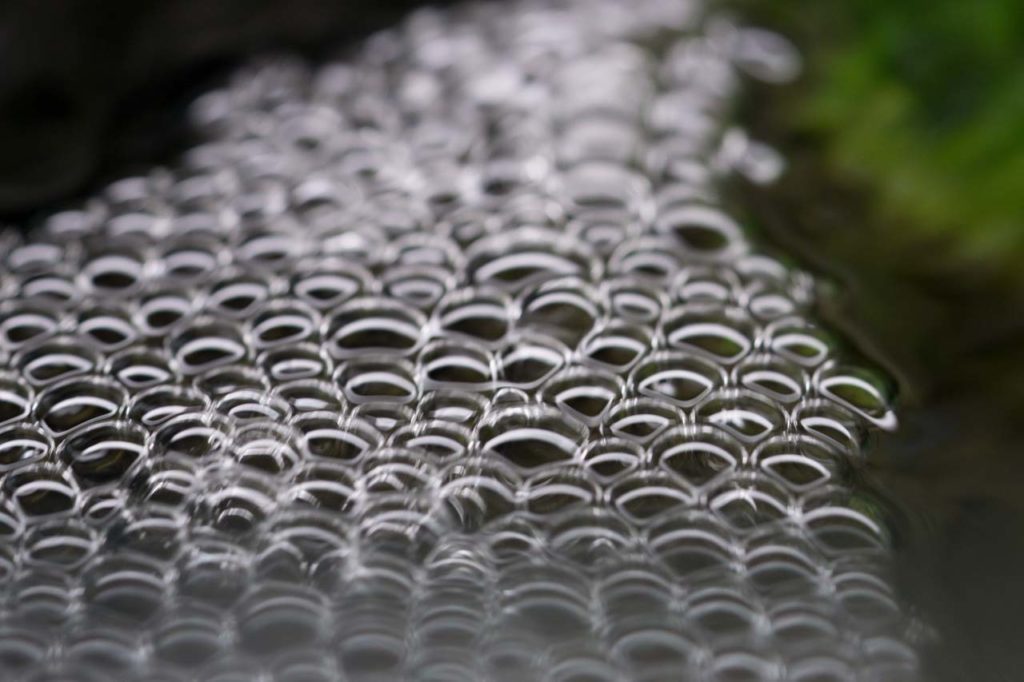Water change and fertilization of aquatic plants during the Run-in phase carry out: Today we want to devote ourselves to a topic that is always up for discussion in forums. When should you 1. Water change do with a newly set up aquarium? There is also a close connection here with the question of first fertilization of the aquarium. We want to answer this question accordingly. One thing has to be said right away. There is certainly no right or wrong here. Much more different combinations can lead to success.

What is actually meant by running in an aquarium?
First, perhaps a word about what actually happens during the run-in phase of an aquarium and why this is so important. More information and a corresponding infographic can be found in the corresponding guide.
In order for a biological balance to develop in the aquarium, certain bacteria must first develop. These bacteria, in turn, are necessary for certain pollutants to be broken down or converted. This is usually also referred to as nitrification. A conversion of the toxic nitrite into the non-toxic nitrate takes place here. If you don't have these bacteria yet, there won't be any conversion. An aquarium should therefore be run in accordingly and fish should only be introduced when the nitrite peak has passed. Ultimately, this is the highest value that arises before the Nitrobacter bacteria can start work.
How long it takes to break in depends on many factors. On the one hand, this can also be the necessity for the emergence of the bacteria. The more pollutants in the aquarium, the more the production of bacteria is stimulated.
What happens with a water change?
The existence water change (WW) We have already explained this in our large guide to changing the water. This question should not be explained again at this point and we refer to the article on WW.
The reason for a water change is usually the reduction of pollutants, the removal of sludge and also the exchange of certain substances in the aquarium. Be it a supply of minerals, which you have in tap water. The main reason, however, is to be found in the removal of pollutants and pollution.
When do I do the first water change?
So if you change the water after just one week of running in an aquarium, it could happen that the promotion of bacterial growth is somewhat inhibited. This does not have to be random, especially in the area of sludge and substrate, but bacteria are also deposited in the filter of the aquarium. Of course, these should not be removed.
Nevertheless, a water change could extend the break-in period.
So there is a lot to be said for not doing the water change too early and perhaps doing it first after a few weeks (4 - 6 weeks). Only when the nitrite peak has taken place and you are about to be stocked with fish.
But there are also reasons to do a water change earlier. Since the nitrobacter are not in the water, you will not remove them much if you do a WW. Nevertheless, pollutants and thus the incentive for education can be reduced.
However, if you are new to aquaristics, you can practice now. Changing the water when there are no fish in it can have advantages. You learn how best to remove the water and put it back into the water. Care must be taken here that not too much sand or gravel is washed up on the substrate. You also have to make sure that no plants are washed out. This can also be practiced very well now.
So let's summarize the following possibilities:
- Possibility 1: Change the water just before the fish are stocked
- Possibility 2: Water change from the beginning in an appropriate rotation
- Possibility 3: Do not change the water during the running-in phase
As already described above, each option has certain advantages and disadvantages. We would recommend that a beginner practice changing the water once and then only changing the water again shortly before stocking the fish. Inveterate aquarists can completely do without the water change in the run-in phase.
How does the whole thing behave in relation to the fertilization of the plants
Again, it will be difficult to say right or wrong. However, Enes seems to emerge quite clearly. Don't fertilize until the plants are established. How long this takes depends very much on the plants. There are fast-growing plants and also rather slow-growing ones. Depending on the time of growth.
In our opinion, however, you should not use just any fertilizer in the first two weeks. This would also further promote the growth of algae, which is particularly high during the start-up phase.
More on this topic: Fertilizing aquatic plants is also available in the corresponding guide.








